A question that I am frequently asked is “Can I grow herbs in the shade?” The answer is yes, provided you choose the right herbs. While most herbs are sun lovers, there are some that tolerate partial shade and a few that actually prefer shade.
First let’s define “partial shade” and “full shade”. Partial shade is 3 to 6 hours of sunlight daily, preferably in the morning. Full shade is less than 3 hours of direct sun each day.
Partial Shade Herbs
Catnip – Nepeta cataria Catnip is one of my favorite herbs for a partial shade garden and not just because I have cats. Catnip may drive my cats crazy, but brewed as a tea it is very soothing for us humans. Native to southern Europe and southwestern Asia, it has become naturalized throughout Europe and North America. It’s a perennial that is hardy to zone 3 and grows to a height of 3 feet. It is a member of the mint family but is not as invasive. It will, however, reseed itself freely throughout your garden.
Chamomile – Matricaria recutita ,known as German chamomile. When I have trouble falling asleep at night, I make myself a nice cup of chamomile tea. An annual, German chamomile will grow to 2’ to 3’. When harvesting chamomile for tea, remember that it is the flowers that you want to use and not the foliage. The leaves are bitter.
Cilantro (Coriander) – Coriandrum sativum a member of the carrot family and native to the regions surrounding the Mediterranean including southern Europe, north Africa and southwestern Asia. It is used in cuisines worldwide. Cilantro, an annual, is a cool season plant. It will bolt, or flower, when the soil temperature rises above 75°F. You can delay flowering a few weeks by heavily mulching the plants to keep the soil cool.
Costmary – Tanacetum balsamita Native to the Mediterrannean area, costmary is well suited to dry conditions. Hardy to zone 4, it grows to 3′ to 4′ in height so it should be planted in the back of your border. It needs full sun to flower, but the flowers are insignificant. Costmary is grown for its fragrant leaves which smell of balsam. Grown in partial shade, it will produce more and larger leaves.
Dill – Anethum graveolens Dill is an annual and a member of the carrot family. It is native to southern Russia and a staple in Russian and eastern European cuisines. Mature plants vary height from 2’ to 4’ depending on the variety. Dill will bloom about 8 weeks after it has sprouted so plant seeds every two weeks through your growing season to ensure a steady supply. Do not plant them near fennel. They will cross-pollinate and the resulting plants will lack the distinctive flavors of their parents.
Fennel – Foeniculum vulgare A native of the shores of the Mediterranean, fennel is a short-lived perennial and hardy through zone 5. Depending on the variety, fennel will reach a height of 4’ to 6’. Like dill, it is a member of the carrot family. It comes in two varieties: those that develop bulbs and those that don’t. It is often used in butterfly gardens because it is the nectar plant of the swallowtail butterfly. This means that butterflies lay their eggs on the plants which then hatch into caterpillars which eat the plants. Do not plant your fennel near dill. They will cross-pollinate and the resulting plants will lack the distinctive flavors of their parents.
Lemon Balm – Melissa officinalis Lemon balm is another great herb for tea but it is also a member of the mint family and reseeds aggressively. Prune it to a few inches several times during the summer to prevent it from flowering. It’s relatively short, 12” to 24” tall, and hardy to zone 5.
Mints – Mentha spp Mints come in a seemingly endless variety. For cooking, use spearmint. Peppermint is used as a tea for indigestion. As a chocolate lover, I always have chocolate mint in my garden. It smells like peppermint patties! Other kinds of mint include orange mint, pineapple mint, apple mint and banana mint. Be cautious when adding mints to your garden. They spread aggressively, crowding out other plants. They are better planted by themselves in a garden or, preferably, in containers.
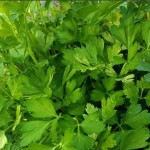
Flat Leaf Parsley
Parsley – Petroselinum crispum, a member of the carrot family, parsley comes in three varieties: flat leaf, curly leaf and root parsley. The flat leaf parsleys are used in both bouquet garni and fines herbes. Parsley is a biennial in its native Mediterranean habitat. North of zone 7, it is grown as an annual because it doesn’t survive the harsh winters. The milder winters of the south are actually good for parsley. It is a cool weather plant that struggles in the summer heat. It is also the nectar plant for small butterflies which lay their eggs on the backs of the leaves. Be sure to wash the leaves well before eating!
Rosemary – Also a staple in any cook’s kitchen, it is not reliably hardy in growing zones colder than 7. Where I live in New Jersey (zone 6) two varieties, Arp and Hill Hardy, often survive the winter with protection. In northern areas, rosemary should be grown in containers and brought inside once the outdoor temperatures are less than 30°F. Mature plants grown outside can reach a height of 5 – 6 feet, depending on the variety. Rosemary is a member of the mint family but is not invasive. It is often used as an ornamental shrub because it can be pruned into hedges and topiary. If you are fortunate enough to live in an area where rosemary is hardy, it will do well for you in a partial shade location.
Tarragon – Tarragon is one of the fines herbes used in French cooking. Be very careful when purchasing tarragon. Make sure that you are getting French Taragon (Artemisia dracunculus ‘sativa’) and not Russian Taragon (Artemisia dracunuculus dracunculoides) which has no scent or flavor. Tarragon is perennial in zones 4 through 8. Mature plants will reach a height of 3’. Prune them regularly to keep the entire plant at a height of 2 feet or it may be prone to falling over. During the winter, tarragon becomes dormant.
Thyme – Thymus vulgaris Thyme is a staple in any cook’s kitchen. It is one of the fines herbes used in French cooking and is also used in bouquet garni. It prefers full sun, but will grow in partial shade. There are many kinds to choose from. French and English thyme are most often used in cooking. French thyme has a milder flavor. If you are looking for something different, there is also lemon thyme and orange thyme, which have distinctive citrus flavors. All of these thymes are upright thymes, growing like small bushes. There are also creeping thymes which form low mats. They are used on walls and between stones in paths. When walked on, they give off the scent of thyme. The most popular is Mother of Thyme. My personal favorite is Woolley thyme. It has no scent, but has soft, fuzzy leaves. Thyme is hardy to zone 5.
Full Shade Herbs
Cardamom – Elettaria cardamomum If you cook Indian food, you will want to reserve a corner of your shade garden for cardamom. Let it go to seed and then collect the seeds to use for your recipes. A tropical, grown in containers and brought indoors during the winter in colder climes, mature plants reach a height of 10 feet or more.
Chervil – Anthriscus cerefolium Another one of the fines herbes used in French cooking. It tastes a lot like tarragon. Use it fresh, rather than dried. Chervil is an annual cool season plant growing best in the spring and fall when temperatures are cooler. In the heat of summer, it bolts (goes to seed). Mature plants attain a height of 12 to 24 inches.
Ginger – Zingiber officinale A tropical perennial that is native to south China, in the US, it can be grown as a perennial in zones 9 through 12. The rest of us either have to grow it in containers and bring our plants indoors during the winter or we have to start our plants indoors and then plant them in our gardens after all danger of frost has passed. Plants grow to 2 to 3 feet in height. Ginger can be harvested within a year of planting.
Ginseng – Panax spp Native to both North American and Eastern Asia, ginseng is a perennial that is hardy in zones 3 through 8. The roots take 8 to 10 years to reach maturity.
Sweet Woodruff – Galium odoratum A perennial hardy in zones 4 through 8, sweet woodruff grows 6” to 12” high. A great groundcover for a shady area but also used dried in sachets and potpourris.
Violets – Viola odorata Native to Europe and Asia, then introduced into North America and Australasia. They are perennials that are only hardy as far north as zone 6. At maturity, violets reach a height of 4 to 6 inches depending on the variety. Like nasturtiums, the flowers are edible. They are usually candied and used as garnish on cakes and pastries. Steep them in water and use the water as a flavoring.
Even if you don’t have a sunny yard, you can still have an herb garden and fresh herbs for your kitchen.

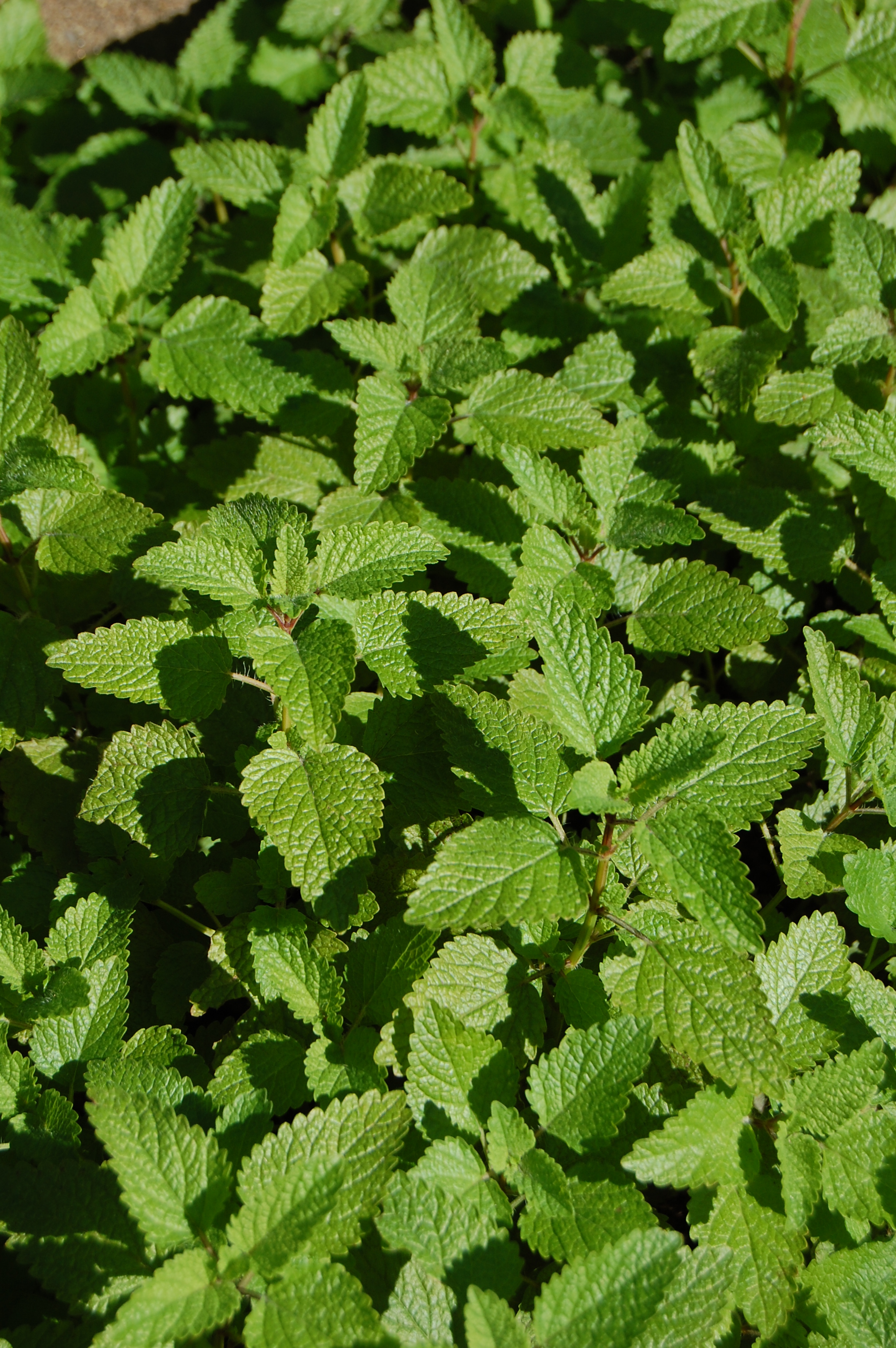
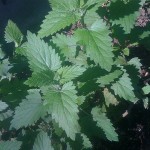




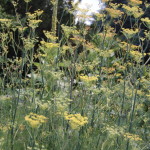
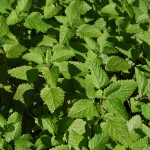
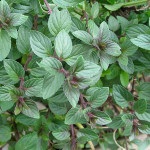
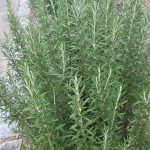


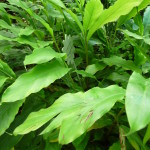
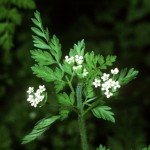
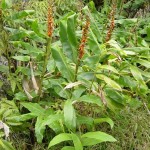
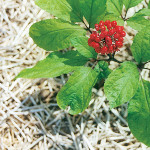
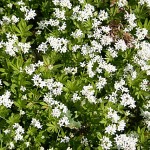

20 Comments on “Shade Tolerant Herbs”
Thank you so much for this post, I love herbs and I really needed plants that grow well in shade conditions, because I have alot of trees and shrubs in my yard, & I’ve been looking for plants and groundcovers to complement them!
So glad that you found it useful!
Will these herbs also grow indoors near a window with only a bit of afternoon filtered light??
No, they need a minimum of 3 to 6 hours of direct sunlight each day. If you want to grow herbs indoors, it’s best to use supplemental lighting.
I have had success with spearmint growing in a very lit window indoors, but it already had growth from being outside… I brought it inside to survive the winter… which it did 🙂
Any herb that is shade tolerant will survive indoors better than herbs that require full sun.
Great post, thanks!
Thanks!
This guide is so helpful, it can be challenging to find herbs that grow in shade. Thank you!!
So happy that you found it useful.
It’s curious that you list violets as Hardy to zone 6. We live in zone 5b and have lots and lots of violets around. My husband’s parents live in 5a, and they also have violets in their yard. His uncle lives in 4b, and while fewer, they are still there. I’m sure there are different varieties that do better in different climates.
Growing zones are determined by the average low temperatures in winter. Thanks to climate change, many areas have been experiencing warmer winters allowing some plants to spread into those areas that weren’t able to survive those winters in the past.
Great post. Thank you. I’m very new to gardening and I spend a lot of money on herbs. Where do you find a map that states the climatic zones? I’m close to Toronto, Canada. We have a very short growing season (May-September if we’re lucky) I want to grow basil, thyme, cilantro, oregano, mint and rosemary if possible.
Susan, you can find Canadian growing zones here: http://sis.agr.gc.ca/cansis/nsdb/climate/hardiness/index.html
Hello, and thanks for your article. I have a question regarding growing Rosemary. You have it listed here in the shade tolerant herbs, but in your instructions for individual plant pages, you say “Provide it with full sun and well-drained soil. ”
I have a rocky spot that gets morning sun then dappled afternoon shade, where I hoped to put a rosemary in a container. What do you think of it’s chances (with the appropriate soil and water needs met)?
Rosemary prefers full sun. If your afternoon shade is very light, it will survive but not grow as well as it would in full sun. Your biggest challenge will be not overwatering your rosemary. Keep reminding yourself that it likes to be dry. That’s what I do because I have a tendency to overwater my drought tolerant herbs which will kill them.
Thank you for this information! My question is about Zone 9b. I have a West facing side yard that gets full sun during the day and shade from the neighboring house in the afternoon. I typically put up sun shades all along the side that filter “up to 85%of UV light”. I’ve had success in the past with container herbs and in-ground stinging nettle patches under these shades and I am wondering if kitchen herbs that needs full sun will make it under the shades. It gets super hot in the summer and I’d like to avoid constant watering and burn if I can. The shades are great but it’s still very bright. Is it advisable to plant sun loving herbs like rosemary in a mostly shaded (but boiling hot) environment? Unfortunately no morning sun hits my side yard. Thanks for considering my question.
Most culinary herbs require full sun and will not grow in a full shade environment. It sounds like your sun shades are not blocking the parts of the light spectrum that plants need to grow which is why you have had success with nettles and container herbs. You should be okay planting sun loving plants in that area. Your biggest problem is the heat. Even if the herb plants you are growing are hardy in zone 9, if that area of your yard is hotter than the rest of your yard, the plants will die. Growing zones are determined by the coldest temperatures of winter, not the hottest temperatures of summer. Not all plants can survive in extreme heat. In this case, if your plants die, my guess would be that it is due to the heat, not the shade. Good luck. I hope that it works out for you. There is nothing like fresh herbs from the garden in your food.
This is the best – thanks for this list! Especially excited to add cardamom and tarragon next year, along with French sorrel, and I’m gratified to learn here that the reason my chervil is doing ok but not spectular is because it wants LESS sun! Very helpful hints also re: heat . thank you
You’re welcome! So glad that I could help.